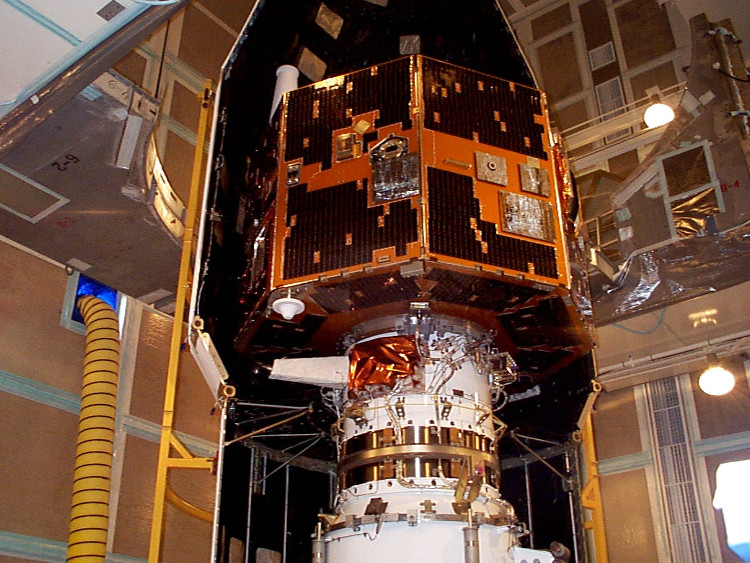Found NASA satellite missing 12 years in the universe
A NASA $ 150 million satellite was lost 12 years ago due to a system error found by amateur astronomers.
Twelve years after the US Department of Aeronautics (NASA) gave up hope to find satellite IMAGE , an amateur astronomer providing the opportunity to restore contact with equipment, International Business Times yesterday. believe. Scott Tilley, who likes to search for top-secret satellites, receives signals from a satellite labeled "2000-017A" while searching for recently lost supplies of the Zuma satellite. After comparing the trajectory of the object found, Tilley can confirm that this is the long-lost IMAGE satellite.

NASA IMAGE satellites in a photo taken in 2000. (Photo: NASA).
In 2000, NASA launched the Magnetic-to-Aurora Exploration Photography (IMAGE) satellite to study the Earth's magnetosphere and its interaction with the Sun. Massive technological equipment acts as a telescope, accomplishes well and is extended by two years.
However, after several years with 37 discoveries, the satellite's energy controller failed and disconnected with NASA."We do not receive teleportation signals by IMAGE scheduled , " NASA said when declaring satellite misplacement in 2005.
Satellite is re-activated for a number of reasons and starts signaling. Tilley announced the discovery on her personal page and speculated that some devices on the satellite orbit could still be active, helping to continue the mission worth $ 150 million.
"This accidental discovery is indeed good news because satellites still exist , " said Patricia Reiff, a mission investigator. "The group is holding their breath waiting for an exchange of information between the IMAGE and the ground."
Whether or not it knows exactly how the satellite restarts, or how it can function if communications are re-established, Tilley concludes it can be turned on when traveling through the dark areas of the Earth. Scientists are working to test devices and determine what to do to restore communications. If that happens, new satellites can go down in history as they continue to operate and provide important findings for NASA.
- If a 'million dollar' satellite suddenly disappears, what will NASA do?
- NASA satellite crashed into the Pacific Ocean and went missing
- Shooting NASA satellite images is falling in the universe
- Found 37-year-old missing autonomous vehicle on the Moon
- Astronomers find the missing part of matter in the universe
- Japan 's 273 million dollar black hole satellite is missing
- US launches satellite to measure emissions
- Capture the world's largest satellite image missing
- What's hot new NASA satellite to communicate with Earth?
- NASA launches the most modern weather satellite to date
- South Korea: Satellite is missing immediately after launch
- Rescue agents for NASA
 Van Allen's belt and evidence that the Apollo 11 mission to the Moon was myth
Van Allen's belt and evidence that the Apollo 11 mission to the Moon was myth The levels of civilization in the universe (Kardashev scale)
The levels of civilization in the universe (Kardashev scale) Today Mars, the sun and the Earth are aligned
Today Mars, the sun and the Earth are aligned The Amazon owner announced a secret plan to build a space base for thousands of people
The Amazon owner announced a secret plan to build a space base for thousands of people